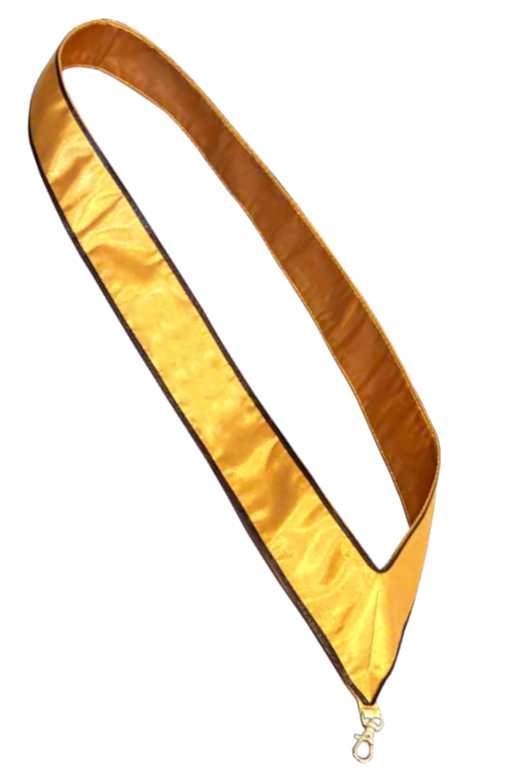ANCIENT & ACCEPTED Scottish rite: 16th° DEGREE – prince of Jerusalem
In Summary:
The 16th degree of the Scottish Rite, “Prince of Jerusalem,” is one of the historical degrees which explores the conflicts and politics surrounding the rebuilding of the Temple of Solomon. This degree is conferred by the Council of Princes of Jerusalem along with the 15th degree. The name of the degree refers to a character who is given the title of Prince of Jerusalem.
Initial Note:
This degree teaches “heroism of patience, the nobility of self-sacrifice” and compassionate judgment, along with charity, fidelity, and brotherhood.
Regalia Notes:
The apron is crimson, lined, and edged with the color saffron. On the flap is an equal balance, held by a hand of justice. In the middle of the apron is a representation of the Second Temple, on one side of which is a sword lying across a buckler, and on the other, a square and a triangle. On the left and right sides are the Phoenician letters equivalent to the Greek letters Alpha and Theta.
The colors, crimson bordered with that of the dawn saffron), are symbolic of faith in the justice and beneficence of God, and of the dawn of hope for the persecuted, proscribed, and oppressed. The equal balance, held by the hand of justice, is a symbol of righteousness and impartiality in judgment and of that equilibrium that the Deity maintains throughout the universe.
The square and triangle are the appropriate emblems of your Masonic character. Masons, in this and higher degrees, wear the apron in order that they may never forget that they attained their high rank and dignity by means of Masonic labor; and that, remembering their first estate, they may be courteous and kind, as well as just, to the brethren of the lower degrees.
The cordon is a watered saffron-colored ribbon, four inches broad, bordered with gold. It is worn from the right shoulder to the left hip. On it are embroidered a balance, a hand of justice holding a sword, a poniard, five stars, and two small crowns. At the end hangs a small silver trowel. The cordon of this degree symbolizes, by its colors, the dawn, and light. Many symbols are embroidered on the cordon. The balance is a symbol of judicial impartiality. The hand holding the sword of justice is an emblem of that stern severity that is sometimes necessary to repress crime.
The poniard or dagger represents that with which Ehud slew the oppressor Eglon, King of Moab (See Judges 3:15-28). The five stars represent the first five Princes of Jerusalem. The two crowns, promised by the Prophet to Zerubbabel and Jeshua, are symbols of civil and religious authorities. The trowel is a symbol of the Mason-builders of the Temple.
The jewel is a medal of gold. On one side is engraved a hand, holding an equal balance, symbolizing the justice and mercy of God, held in equipoise by His single will and infinite wisdom. On the other is a double-edged, cross-hilted sword, with one star over the point and two on each side. The sword stands upright, hilt downward. On one side of
the star is the letter ‘D’, and on the other, the letter ‘Z’, the initials of Darius and Zerubbabel.
Duties are:
• To direct and aid those who labor to build the Symbolic Temple. Judge equitably and fairly. Provide aid of whatever kind to fellow Princes of Jerusalem. Keep faith in the justice and beneficence of God. Press forward with hope for the persecuted and oppressed.
For Reflection:
• Will you leave a noble heritage to those who follow you in this world?
Lessons:
• Build Temples of the Living God in our Hearts by following Masonic Truth – justice, equity, morality, wisdom, labor, fidelity, and brotherhood – to achieve immortality.
Important Symbols:
• The color saffron, the Seal of Solomon, the colors white, blue, red, violet, five steps to the throne, the scales, or balance.
Additional Notes:
The drama enacted continues the legend of the building of the Second Temple and the walls of the city of Jerusalem. The exiles, who returned to Jerusalem under the protection of Cyrus (537 B.C.), were thwarted in their efforts to rebuild the Temple by the Samaritans and the other adversaries, who accused them of intrigue and sedition against the Persian government. Cyrus, occupied with his eastern wars, did not give the Jews the necessary support to continue the work.
His successor Cambyses (also known as Artaxerxes, following the references in the book of Ezra in the Bible), had little sympathy for his struggling subjects. As a result, the restoration of the sanctuary was delayed for seventeen years (Ezra 4:24). The ascent of Darius to the Persian throne gave new hope to the leaders of the Jews. In 520 B.C. the prophets Haggai and Zechariah stirred up the people to renewed efforts. Under their inspiration, Zerubbabel, the civil leader of the colony, set earnestly to work (Ezra 5:1-2).
An inquiry to Darius by Tattenai, the satrap, or governor, of Syria (Ezra 5:3-17), resulted in the confirmation of the contention that the Jews’ proceedings were not only lawful but actually carried on under royal authority. Darius gave orders that a search should be made. In the city of Ecbatana, the edict of Cyrus was found containing all that the Jews had claimed (Ezra 6:1-5). Darius, therefore, made a new proclamation insisting that no obstacle should be put in the way of the people of Jerusalem, that the building of the Temple should be forwarded, that interference with the work should be a capital offense, and that contributions should be made in money and goods from the king’s local revenues for the expenses of the restoration (Ezra 6:6-12).
Accordingly, the satrap and his officers carried out the orders of Darius (Ezra 6:13, sq) with all diligence. As a result, the Temple was finished and dedicated in 516 B.C. the sixth year of the reign of Darius (Barnes’ Bible Encyclopedia 1903, Vol I, p.247). Such is the simple history of the events portrayed in this degree, but this outline hardly conveys the frustrations of the people during the dark days of their persecution or their joy at being able to finish such a noble work.
Sources:
Purchase ‘A Bridge To Light‘ by Rex R. Hutchens
Purchase ‘Morals & Dogma‘ by Albert Pike.

‘Prince of Jerusalem’
Please view the video on the left, for a more detailed explanation of the 16th° Degree.



